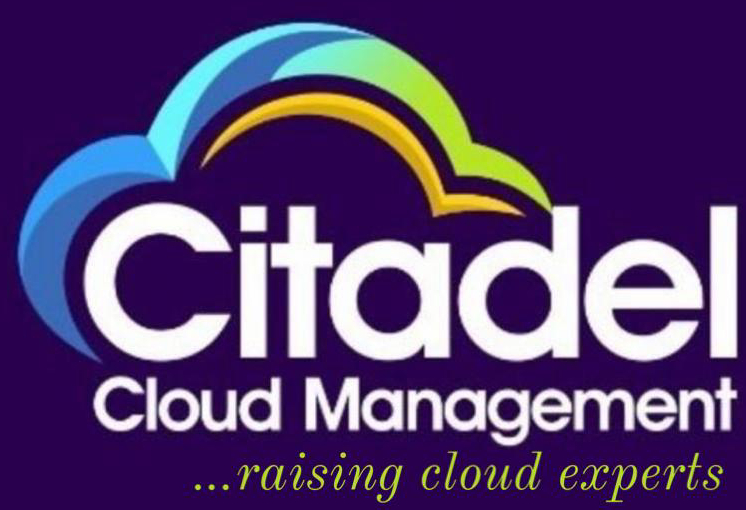
Implementing Azure DevOps, Azure Security: Protecting Your Cloud Environment
citadelcloud
In today’s digital landscape, businesses are increasingly relying on cloud-based solutions to enhance their operational efficiency. Among the most prominent players in the cloud arena is Microsoft Azure, which offers a suite of tools and services designed to facilitate development, deployment, and management of applications. Azure DevOps and Azure Security are essential components for organizations aiming to streamline their processes while ensuring robust protection for their cloud environments. This blog post will delve into the implementation of Azure DevOps alongside Azure Security to safeguard your cloud infrastructure.
Understanding Azure DevOps
What is Azure DevOps?
Azure DevOps is a set of development tools provided by Microsoft that facilitates collaborative software development. It encompasses several services, including Azure Boards for project management, Azure Repos for source control, Azure Pipelines for CI/CD, Azure Test Plans for testing, and Azure Artifacts for package management. By integrating these services, teams can improve their development workflow, increase productivity, and enhance software quality.
Benefits of Azure DevOps
- Collaboration: Azure DevOps promotes collaboration among development, operations, and security teams, ensuring everyone is on the same page throughout the software development lifecycle (SDLC).
- Continuous Integration and Delivery (CI/CD): Azure Pipelines enable teams to automate their build and release processes, reducing manual errors and speeding up the delivery of applications.
- Flexibility: Azure DevOps supports multiple programming languages, platforms, and cloud environments, allowing teams to work with their preferred tools.
- Scalability: As organizations grow, Azure DevOps can scale with them, accommodating larger teams and more complex projects.
Implementing Azure DevOps
Step 1: Setting Up an Azure DevOps Organization
To begin implementing Azure DevOps, organizations must create an Azure DevOps organization. This serves as a central hub for all development projects. Users can sign up for Azure DevOps using their Microsoft account, and once the organization is created, they can create projects to manage their work.
Step 2: Configuring Azure Boards
Azure Boards allows teams to plan, track, and discuss work across projects. Teams can create work items, such as user stories, bugs, and tasks, and use Kanban boards or Scrum boards to visualize their workflow. Setting up Azure Boards involves defining team areas, customizing work item types, and establishing workflows that suit the organization’s needs.
Step 3: Setting Up Repositories with Azure Repos
Azure Repos provides version control for source code, supporting Git repositories and Team Foundation Version Control (TFVC). Teams should set up repositories to manage their code, establish branching strategies, and implement pull requests to facilitate code reviews. Integrating Azure Repos with Azure Boards enables automatic linking of work items to code changes.
Step 4: Automating Builds with Azure Pipelines
Azure Pipelines enables continuous integration and continuous delivery (CI/CD) by automating the build and deployment process. Organizations should define pipelines for their applications, specifying the necessary build and test steps. This ensures that every code change is automatically built and tested, reducing the risk of defects and speeding up the delivery process.
Step 5: Implementing Testing with Azure Test Plans
Azure Test Plans offers a suite of testing tools to ensure application quality. Teams can create test plans, define test cases, and execute tests manually or automatically. Integrating testing into the CI/CD pipeline helps identify issues early in the development process.
Step 6: Managing Dependencies with Azure Artifacts
Azure Artifacts enables teams to create, host, and share packages. Organizations should use Azure Artifacts to manage dependencies for their applications, ensuring that teams can easily access and reuse shared code components.
Understanding Azure Security
What is Azure Security?
Azure Security encompasses a range of services and features designed to protect Azure resources and data. It provides organizations with the tools to secure their cloud environments, manage identities, and respond to security threats effectively.
Key Components of Azure Security
- Azure Active Directory (Azure AD): A cloud-based identity and access management service that enables organizations to manage user identities, authenticate users, and control access to resources.
- Azure Security Center: A unified security management system that provides advanced threat protection across hybrid cloud environments. It helps organizations monitor security posture, manage security policies, and respond to security incidents.
- Azure Sentinel: A cloud-native security information and event management (SIEM) solution that uses artificial intelligence to analyze data across multiple sources and identify potential threats.
- Azure Key Vault: A service that helps organizations securely manage keys, secrets, and certificates used in their applications.
Implementing Azure Security
Step 1: Setting Up Azure Active Directory
Organizations should start by configuring Azure AD to manage user identities and control access to Azure resources. This involves creating user accounts, defining roles and permissions, and implementing multi-factor authentication (MFA) to enhance security.
Step 2: Enabling Azure Security Center
Enabling Azure Security Center allows organizations to monitor their security posture and receive recommendations for improvement. Organizations should regularly review security alerts and implement recommended security policies to enhance their protection.
Step 3: Configuring Azure Sentinel
Azure Sentinel provides organizations with a comprehensive view of their security landscape. By connecting data sources such as Azure logs, on-premises systems, and third-party applications, organizations can leverage AI and machine learning to detect threats and respond effectively.
Step 4: Utilizing Azure Key Vault
Organizations should store sensitive information, such as API keys and connection strings, in Azure Key Vault. This helps secure sensitive data and simplifies access management by centralizing secret management.
Integrating Azure DevOps and Azure Security
Why Integrate Azure DevOps with Azure Security?
Integrating Azure DevOps with Azure Security is crucial for implementing a DevSecOps approach, where security is integrated into the development process from the outset. This ensures that security is not an afterthought but a fundamental aspect of software development.
Best Practices for Integration
- Shift Left: Incorporate security checks early in the development process by integrating static code analysis and security testing tools into Azure Pipelines.
- Automate Security Policies: Use Azure Security Center to define and enforce security policies across Azure resources automatically.
- Monitor and Respond: Utilize Azure Sentinel to monitor application logs and identify potential security threats in real-time. Implement automated response actions to address threats quickly.
- Continuous Training: Educate development teams on security best practices and provide them with the tools they need to incorporate security into their workflows.
FAQs
1. What is the difference between Azure DevOps and Azure Security?
Azure DevOps focuses on improving collaboration and efficiency in the software development process, while Azure Security is concerned with protecting cloud resources and data from threats.
2. Can I use Azure DevOps without Azure Security?
Yes, you can use Azure DevOps independently, but integrating it with Azure Security is recommended to ensure that your applications are secure throughout the development lifecycle.
3. How do I ensure compliance with security regulations using Azure Security?
Azure Security Center provides tools to assess your security posture against compliance standards. You can also use Azure Policy to enforce compliance with specific regulations.
4. What is a DevSecOps approach?
DevSecOps is a methodology that integrates security practices into the DevOps process, ensuring that security is considered at every stage of the software development lifecycle.
5. Can I integrate third-party security tools with Azure DevOps?
Yes, Azure DevOps supports integration with various third-party security tools. You can incorporate these tools into your CI/CD pipelines to enhance your security posture.
Conclusion
Implementing Azure DevOps alongside Azure Security is crucial for organizations looking to protect their cloud environments while streamlining their software development processes. By following best practices and leveraging the powerful tools offered by Azure, organizations can achieve a secure and efficient cloud infrastructure. Embracing a DevSecOps approach ensures that security is an integral part of the development lifecycle, ultimately leading to higher-quality applications and reduced risks.
Table of Contents
Latest Articles

ADDRESS
Houston, Texas USA
US LINE
+1 (346) 652-4970
NIGERIA LINE
081 2852 0152
MAIL ADDRESS
info@citadelcloudmanagement.com
QUICK LINKS
- © 2025. All Rights Reserved By Citadel Cloud Management
